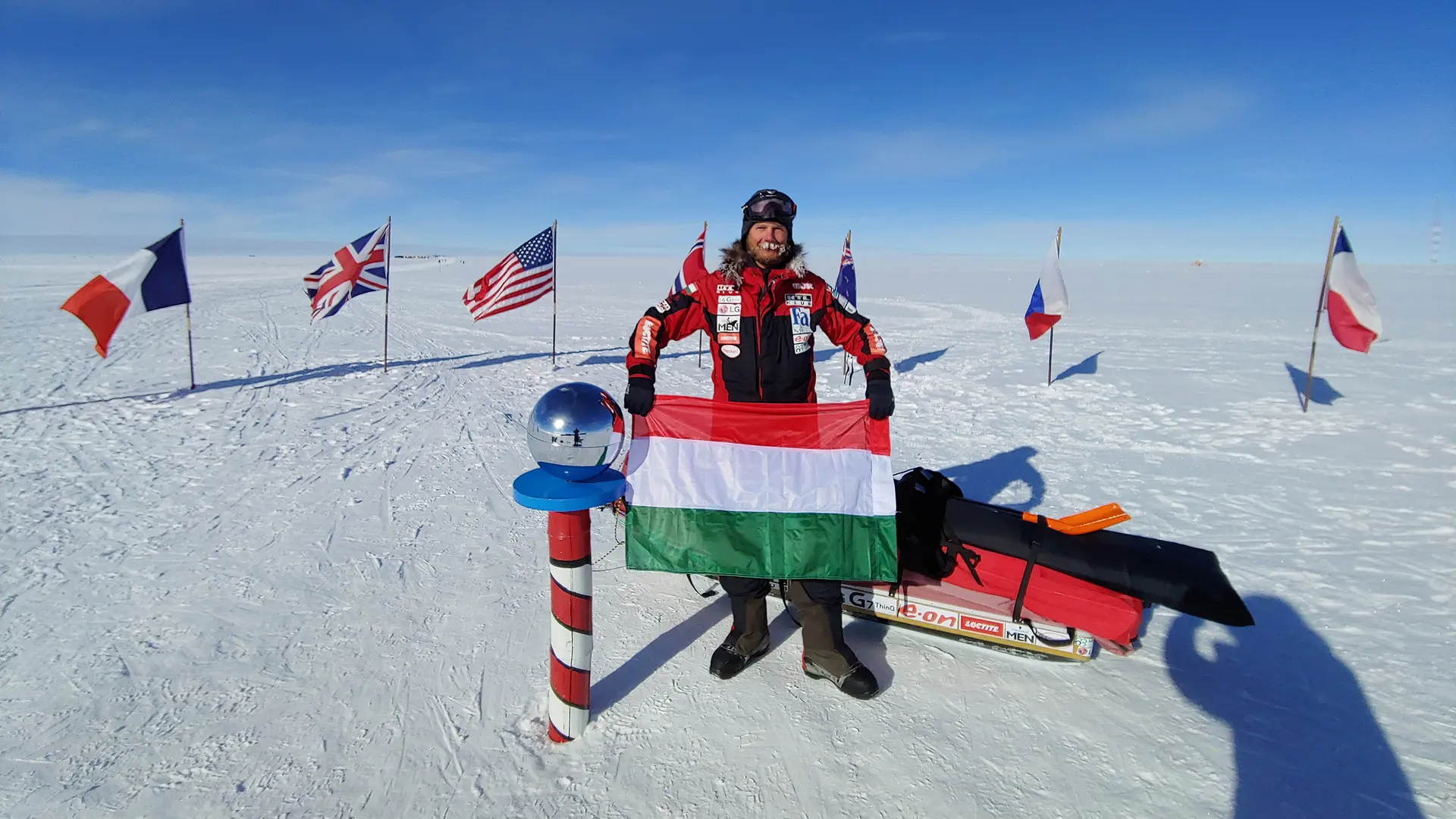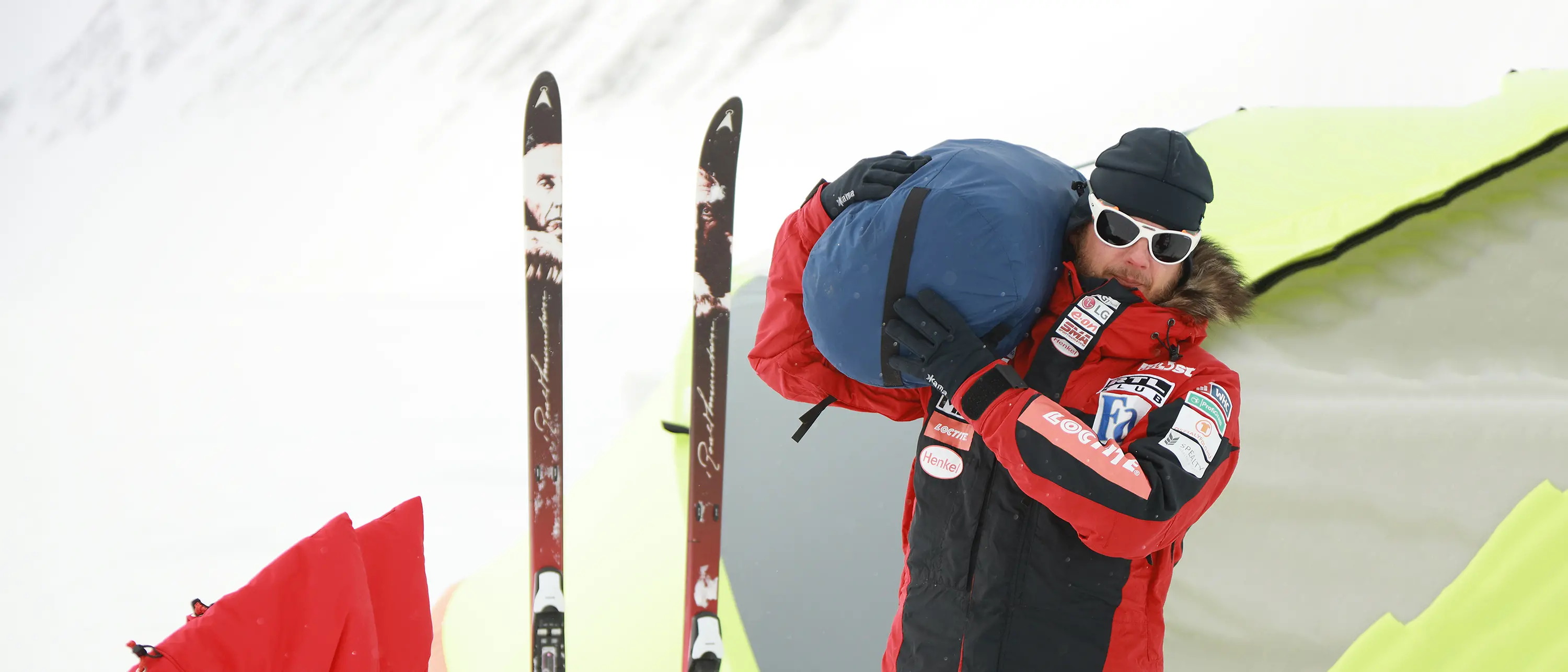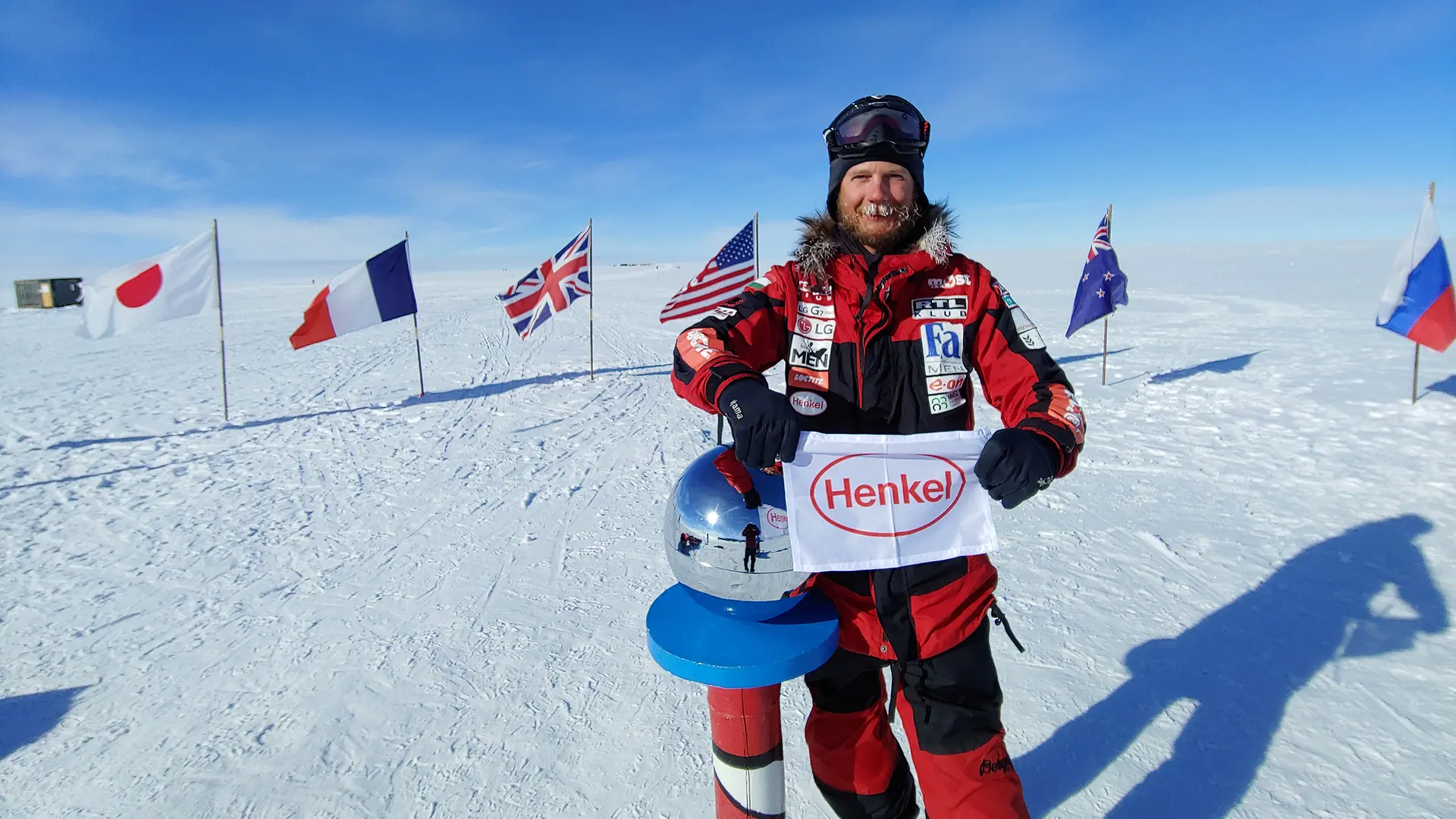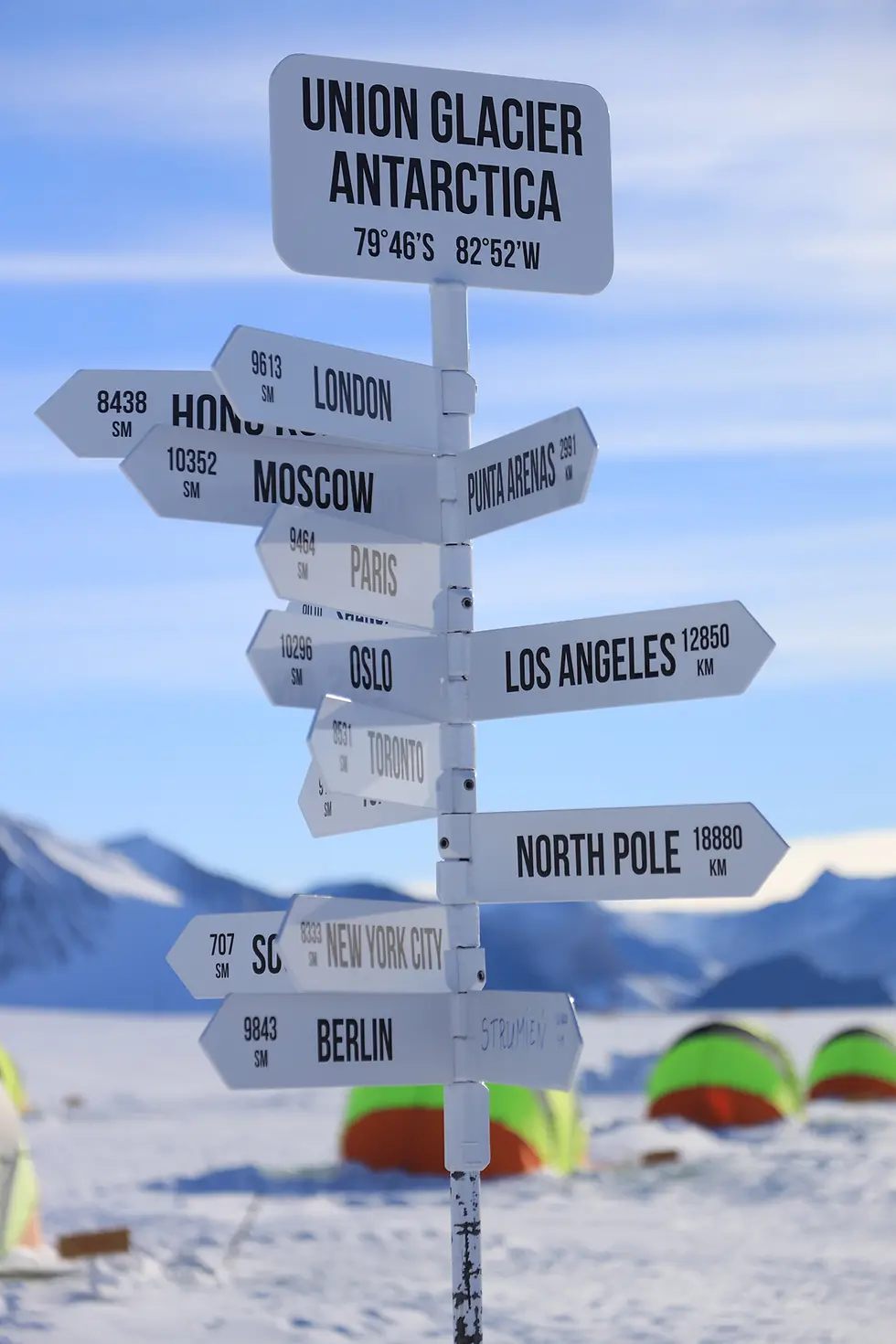Discover the brands and technologies from our business units Henkel Adhesive Technologies and Henkel Consumer Brands.
Think outside, no box required: How to conquer Antarctica

The journey of a thousand kilometers begins with a single step: In November 2018, Gábor Rakonczay set out to discover the mythical continent of Antarctica, the place which belongs to everyone in general and no one in particular. Over the course of 44 days (and 4 hours), the Hungarian extreme athlete walked uphill in the blinding whiteness, defied the blazing sunlight and kept going even in -25 degrees Celsius – all while pulling a 94-kilogram sled. After completing the distance of 950 Kilometers, he reached his destination on January 7, 2019: The South Pole. Even though he burned 10 percent of his body weight in the effort and showed frostbites on his face, he was happier than ever.
In this interview, he shares his thoughts on motivation and explains how he managed to complete his adventure.
What motivates you to pursue extreme sports and sometimes even put yourself in danger?
The message of a film called The First Man inspired me. The film is about Neil Armstrong, who not only visited the moon, but also Antarctica. Based on this film, he must have been a man, who would have either died on the way or bring it to an end – but nothing in between. And that is exactly what I am aiming for. The motivation and the energy that you can absorb from an experience like this makes you realize that you can achieve a little bit more than planned every day.
On the other hand, it is a wonderful feeling to realize that you find yourself in Antarctica – especially when this is the confirmation of a childhood dream. It is not only the high mountain ranges that offer you a beautiful panorama, but it is also the beauty of nature itself at the polar circle. However, most importantly, you tear yourself out of the civilized world and bring yourself in extreme situations. I was not afraid that something could happen to me, in spite of all the struggling, the bitter cold, the heavy slide, because I always told myself: “Never again will I have an opportunity like this!”
Living – and especially exercising – in Antarctica is tough. How did you come up with the idea of making this very special trip and how did you prepare for your time there?
This tour was a childhood dream of mine. I did not necessarily know at the age of ten that I was to cross Antarctica, but I certainly knew that the place where, back in 1911, the Norwegian polar explorer Amundsen took over the scientific researcher Scott, must be a fantastic place. Of course, just admiring the history of a place does not suffice to make it, but the fulfilment of a childhood dream, can be a real motivation.
The key to my physical preparations was the crossing of Greenland in August 2018. Additionally, this exercise allowed me to enjoy the expedition later on, as I did not have to struggle to survive day to day. I also jogged a lot before and after, as it is the best preparation for endless marching. I must be able to cover up to two hundred kilometers if necessary. Additionally, the movement with the ski could be prepared by slowly jogging uphill during the trainings. In -20 to -30 °C, with wind gushes of 60 kilometers per hour, uncovered limbs are prone to frost bites, so you must get dressed properly.

How did you motivate yourself to go on every day? Do you have a mantra that drives you forward – is giving up even an option?
Over the course of the past 13 years, I shaped my mental technique in an autodidactic way, and thanks to that, I think I can risk saying that I was the most stable member of the team. It is vital to retain your internal motivation and not to think “What the hell are you doing here in the middle of the ice field?” If it hits your mind only once, the stimuli lacking may easily tear you apart. Just like a ship: Once getting a leak, albeit slowly, it will sink.
Here’s an example for my mental technique: It might seem ruthless and cruel, but you must put your life at during a tour like this. If I had started to think about my family, I would have become sad – and such an idea puts you off the track right away. You fall into a downward spiral, which may jeopardize the whole expedition. I had to fight daily struggles not to derail my thoughts.
What character traits helped you with your challenge?
Ever since I was a child, I tested my limits. And it seems, now, at the age of 38, I was still able to probe those limits. When I was 13, I imagined that I was the best navigator in the world and it did not even hit my mind that I ought to do something else. I often found myself standing on top of the winners’ podium. In fact, so often that it became customary – my goal was to beat my own time with yet another ten minutes. It was like a competition with myself.
This is how I turned to rowing – to put it more precisely, ocean crossing. I have beaten the odds to become the first person to paddle solo across the Atlantic Ocean in a canoe. Of course, this has been done before: People crossed the Atlantic on water bicycle, kite – but nobody in a canoe. I was 30 at that time and it was my first solo trip, so I was interested in how I can live up to my commitment. Even today, it is still important for me that I was the first Hungarian to have ever made this 950-kilometer-long trip.

What was your biggest goosebumps moment during the journey?
It is almost impossible in our civilization to be really alone as there is always your smartphone that you can turn to. At the South Pole, it is quite different: You can be all by yourself with nothing there except for the barren, snow covered ice field. I was able to experience the moments a lot deeper than before.
What was the greatest challenge in this expedition to Antarctica?
There was a 200 km section, where we had to walk in very deep snow, which was physically difficult. Also, I have never been in an environment with such a complete lack of stimuli. It felt like my thoughts had worn out thin. I was expecting something like that, but not to this extent. When I spotted the South Pole Base, I had a mixture of emotions: It was as if part of me has always known that I will be successful, and as if deep inside this part of me was just smiling quietly. Would I do it again, knowing what awaits me? Of course, I would.
What's the best advice anyone's ever given you?
Your goal should not be to do as many expeditions as you can, but to survive and grow old, so you can tell your stories about your journeys to your grandchildren when you turn eighty.

After 44 long days, Gabor achieved his biggest goal yet: He became the first Hungarian to ever reach the South Pole.









